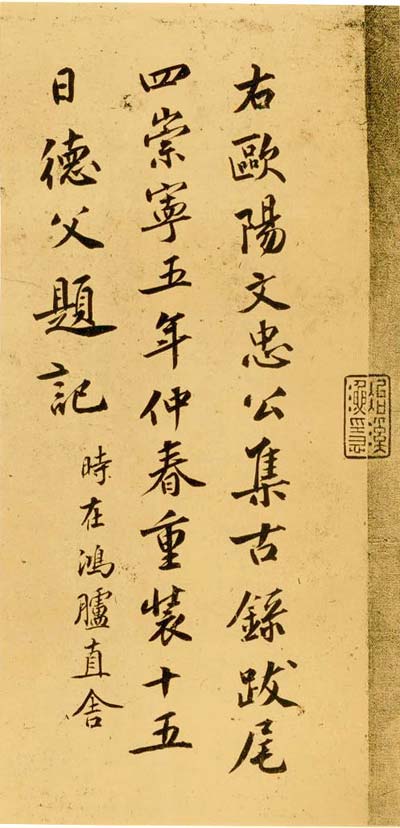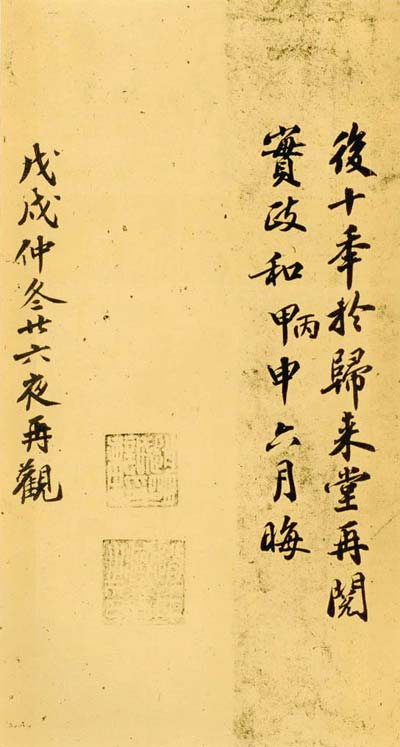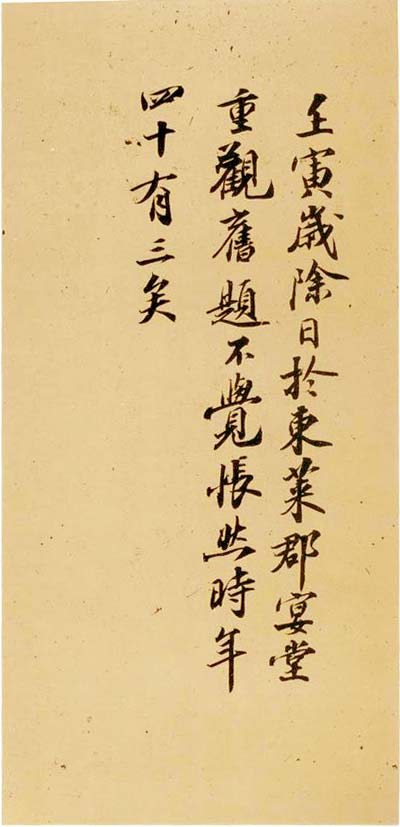Zhao Mingcheng (1081-1129) was a famous epigrapher and collector of cultural relics. His courtesy name was Defu (also known as Defu), a native of Zhucheng, Mizhou (now Longdu Street, Zhucheng, Shandong), and the third son of Zhao Tingzhi, prime minister during the Chongning period of Emperor Huizong of the Song Dynasty. Shaoxi collects and preserves stone carvings from previous generations. As a student of Imperial College, he entered officialdom under the influence of his father. When Zhao Mingcheng was 21 years old and still studying at Taixue, he married Li Qingzhao. In October of the fourth year of Chongning (1105), he was awarded the title of Shaoqing Honglu. In March of the first year of Daguan (1107), Zhao Tingzhi passed away and was framed by Cai Jing. He was chased for the official position and his family members were implicated. In the second year of Daguan (1108), he and Li Qingzhao returned to Qingzhou's former residence and searched extensively for ancient and modern books, monuments, and stone carvings. During the Xuanhe period, Zhao Mingcheng served as magistrate of Laizhou and Zizhou successively. In the first year of Jianyan (1127), Emperor Gaozong of the Song Dynasty, he became aware of Jiangning Prefecture. In the third year of Jianyan (1129), Emperor Gaozong of the Song Dynasty, he moved to Huzhou but did not go there and died of illness in Jiankang.
Dedicated to collecting and textual research, he has a rich collection of books and has the ambition to use all the ancient Chinese and Chinese characters in the world. His father held a high position, and many of his relatives and friends were employed in palaces and pavilions. They had many dead poems and histories, and books that had never been seen in Lubi Jizhong, so he tried his best to pass them down and write them down. The couple scrimped on food and clothing and searched hard, and every time they got a book, they edited it together. A library was built with a "Return Hall", which was registered and cataloged. List books by category. When the Jin soldiers invaded the south, they took their families to seek refuge. They couldn't carry all the books, gold and stones, so they chose the best ones and still carried 15 carts of books to the East China Sea. There are still more than 10 books in Qingzhou. In the first year of Jianyan (1127), the Jin soldiers invaded Qingzhou and the books were reduced to ashes. He imitated Ouyang Xiu's "Collection of Ancient Records" and wrote 30 volumes of "Epigraphy and Stone Records". He arranged 2,000 kinds of epigraphic inscriptions into a series, explained them in a coherent manner, and made profound textual research. It is a masterpiece of epigraphy. Li Qingzhao wrote the "Preface to the Records of Jinshi", which describes the compilation process of "The Records of Jinshi" and the details of the couple's collection of books and paintings. It is sad and graceful, and the writing style is touching. He also wrote 15 volumes of "Ancient Artifacts and Steles".



After Zhao Mingcheng inscribed Ouyang Xiu's "Collection of Ancient Records and Postscripts" Collection of the National Palace Museum, Taipei
Explanation:
Right Ouyang Wenzhonggong Collection of Ancient Records at the end of the fourth postscript. It was reinstalled in February of the fifth year of Chongning (1106). Inscription by Defu on the 15th. At that time, I was in Hongluzhishe.
I read it again in the Return Hall ten years later. Real politics and. First. Bingshen (1116) is dark in June.
Wuxu (1118), the twenty-sixth night of midwinter. Look again.
Renyin (1122) is the day of the end of the year. Revisit the old title at the banquet hall of Dongnae County. Feeling sad. He was thirty-three years old at that time.








